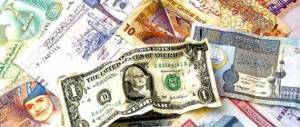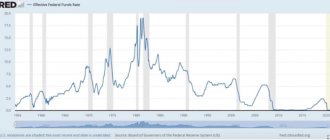Why does the tax period affect the ruble exchange rate?
The cost of oil is the main factor influencing the ruble exchange rate. But there are others, for example, the tax period, which, by the way, is the only predictable event that can strengthen the national currency. Mikhail Kogan, head of the analytical research department at the Higher School of Financial Management , told AiF.ru how this mechanism works :
“The Russian economy has a raw material bias, which is even more evident in the structure of the budget revenues. Oil and gas companies, in addition to the general obligations for all legal entities to pay income tax, VAT (value added tax) and other taxes, are also forced to pay mineral extraction tax (mineral extraction tax), export customs duties, as well as VAT (tax for additional income from production) and excise taxes.
Since 2006, the Ministry of Finance has included industry-specific tax collections in a separate category of oil and gas revenues. It allows you to assess the degree of “oil dependence”.
What will happen to the ruble exchange rate by the end of the year? Currency forecast Read more
At the end of last year, oil and gas revenues amounted to 7.9 trillion rubles, or 39.2% of all federal budget revenues. In previous years, this figure ranged from 36% to 51%. In other words, from a third to half of the federal budget is based on revenues from oil companies, Gazprom and independent gas producers. A significant part of the extracted raw materials is exported. Last year, 54% of the gas monopoly came from supplies to the domestic market, and 46% from exports, the cost of which is formed in foreign currency. This cannot but have a serious macroeconomic effect.
During the quarterly tax payment period, which falls in January (profit tax in March), April, July and October, total tax payments can exceed 1 trillion rubles. To fulfill their obligations to the state, the largest companies from the fuel and energy complex, as well as other exporters of natural resources, are forced to convert foreign currency earnings into rubles, which leads to a technical strengthening of the national currency.
The calendar of tax payments can be viewed on the website of the Federal Tax Service of Russia. Mineral extraction tax, excise taxes and VAT must be paid on the 25th of each month, income tax on the 28th, or in both cases on the first subsequent working day if these dates fall on weekends.
Many companies evaluate the situation on the foreign exchange market when deciding on foreign currency conversion. Often, the impact of the so-called tax period begins to appear ten days before the onset of tax obligations, reaching its apogee a couple of days before the “X” date.
Whose currency has fallen the most during the pandemic? More details
Ordinary citizens need to understand that this factor may not always have a decisive influence on the exchange rate of foreign currencies. The largest taxpayers may attract short-term loans in rubles, may have a sufficient number of rubles in their accounts for settlements with the Federal Tax Service, or the impact of paying taxes may be offset by other factors, for example, flows of foreign investors into securities denominated in Russian currency.
It should also be borne in mind that the tax factor manifests itself most clearly at the time of the already mentioned quarterly payment; in other months this effect is not so noticeable.
For those who are planning to buy the dollar and euro, knowing this information will allow them to choose a better moment. All other things being equal, after the end of the tax period, the ruble loses support from taxpayers and begins to respond more sensitively to the influence of oil prices and sentiment on global financial markets.”
What is meant by tax period in Russia?
The tax period in Russia is a period of time after which the final tax base is drawn up, and the tax is calculated and paid from it (Clause 1 of Article 55 of the Tax Code of the Russian Federation). In most cases, this period is equal to a calendar year, but can be a quarter or a month.
In the Tax Code of the Russian Federation, a tax period of less than 1 year is established for a number of taxes. Thus, a quarterly tax period is defined for VAT (Article 163 of the Tax Code of the Russian Federation), water tax (Article 333.11 of the Tax Code of the Russian Federation), UTII (Article 346.30 of the Tax Code of the Russian Federation), and trade tax (Article 414 of the Tax Code of the Russian Federation).
The shortest tax period, lasting only a month, is defined, for example, for taxes such as mineral extraction tax (Article 341 of the Tax Code of the Russian Federation) and excise taxes (Article 192 of the Tax Code of the Russian Federation).
But even the legally established period is not always the same length. Art. 55 of the Tax Code of the Russian Federation considers the following cases of lengthening and shortening the tax period:
- for newly formed companies or individual entrepreneurs, the moment of state registration of which is located between January 1 and December 31 (August 25, for example), the first tax period is shortened and is from 08/25/2017 to 12/31/2017 (paragraph 2, paragraph 2, article 55 Tax Code of the Russian Federation);
- for a company (or individual entrepreneur) registered in December (for example, 12/08/2016), the first tax period becomes longer than usual - from 12/08/2016 to 12/31/2017 (paragraph 3, paragraph 2, article 55 of the Tax Code of the Russian Federation);
- for organizations and individual entrepreneurs who decide to reorganize or even liquidate their business during the year, the last tax period will be shortened compared to the usual one; as a result, its duration will be, for example, from 01/01/2017 until the moment of reorganization or liquidation (paragraph 1, paragraph 3, article 55 of the Tax Code of the Russian Federation);
- if a company or individual entrepreneur was created in 2021 and was liquidated (reorganized) at the same time, then the tax period for them is the time period from the moment of state registration until the moment of liquidation (reorganization) (paragraph 2, paragraph 3, article 55 of the Tax Code of the Russian Federation);
- for a company (or individual entrepreneur) created in December 2021 (for example, 12/20/2016) and ceased operations in 2021 (for example, 12/30/2017), the tax period will be the time period from 12/20/2016 to 12/30/2017 (paragraph 3 clause 3 of article 55 of the Tax Code of the Russian Federation);
- for a foreign company that has recognized itself as a tax resident, the duration of the tax period depends on the date of recognition specified in the statement about this event (clause 6 of Article 55 of the Tax Code of the Russian Federation).
Similar rules apply for a tax period equal to a quarter. However, the time period that allows it to be extended is not equal to 1 month (December), as for a year, but to 10 days remaining until the end of the quarter (paragraph 3, clause 3.1, paragraph 3, clause 3.2, article 55 of the Tax Code of the Russian Federation).
What is a reporting period and when is it considered equal to the tax period?
A reporting period is a period of time for which a taxpayer must report on a specific tax or, if necessary, transfer an advance. It is shorter in duration than the tax period.
Typically, one tax period contains several reporting periods, and the law determines their exact number. For example, for land tax paid by organizations, Art. 393 of the Tax Code of the Russian Federation, the calendar year is established as a tax period, and quarters, accordingly, are indicated as reporting periods.
At the same time, the Tax Code provides for the possibility of completely abandoning reporting periods for certain types of taxes. For example, since land tax is classified as local, local governments are given the right not to establish reporting periods for this tax (clause 3 of Article 393 of the Tax Code of the Russian Federation).
In such cases, the tax and reporting periods coincide in length (tax reporting period).
For information on how land tax is paid, read the material “Procedure and deadlines for paying land tax in 2016-2017” .
The Russian ruble, which had been strengthening against the dollar all day yesterday and falling in price against the euro, turned around in evening trading against the dollar and intensified its fall against the single EU currency. Thus, the dollar exchange rate at the close of the main trading session of the Moscow Exchange amounted to 71.8 rubles. which is 6.5 kopecks. above Friday's closing level. The euro exchange rate was 84.37 rubles, having risen in price by 81.25 kopecks overnight. Thus, the EU currency was trading above 84.00 rubles the day before. for the first time since April 22.
According to experts, at the very beginning of the last week of July, the ruble turned downward against the dollar and accelerated its decline against the euro against the backdrop of a number of negative factors, including the fears of players due to the continued increase in coronavirus cases, the conflict between the United States and China, and the threat of new anti-Russian sanctions. But, first of all, the ruble reacted painfully to falling oil prices.
Thus, the price of Brent contracts fell to $42.54 per barrel on Monday evening, losing 1.85%. WTI futures traded at $40.66 per barrel, down 1.53% on the day.
As Bogdan Zvarich from Promsvyazbank noted on Monday, the ruble was pressured by a powerful decline in the energy market. At the same time, in his opinion, a very strong factor for the dynamics of the main world currencies against the Russian currency was the situation in the euro-dollar pair, which grew at the moment to the level of $ 1.178, which was the maximum since September 2021.
“It is curious that despite the weakness of the dollar on the international market, the national currency on Monday was unable to strengthen against the “American”, which retained its position within the framework of consolidation in the lower half of the corridor of 70.00-75.00 rubles. We believe that in the near future the ruble will continue to move in this range, and will probably soon break through several important psychological marks at once, the first of which at 72.00 may fall today,” Zvarich concluded.
Grigory Zhirnov from Nordea Bank recalled that he had repeatedly warned that the possibilities of the ruble paired with the euro are very limited, since the EU currency remains in favor on the Forex market. At the same time, the expert emphasized that even the peak of tax payments did not help the Russian currency yesterday.
“In this regard, we once again want to say that the opportunities for strengthening the ruble on the August horizon are extremely small. The national currency will continue to be pressured by the slow recovery of the global economy, the periodically flaring conflict between Beijing and Washington, the spread of COVID-19, threats from the United States and Western countries to introduce new anti-Russian sanctions and the factor of converting dividends into foreign currency in the coming two weeks. All this, both short and long, will weaken the ruble, which will go into the range of 72.50-74.50 in August,” he suggested.
Sergei Drozdov from Finam Group believes that the local weakening of the dollar paired with the euro will end tomorrow – after the Federal Reserve meeting.
“Therefore, before the end of this working week, the American currency will win back some of the previously lost positions. So for now, in the absence of any noticeable drivers, the dollar will remain paired with the ruble in the corridor of 70.50-72.30 rubles,” he noted.
In turn, Andrey Kochetkov from Otkrytie Broker looks at the immediate prospects for the ruble positively.
“I am sure that paired with the euro, the national currency will definitely not fall to the level of 90.00 rubles, as many people are sure of this. Moreover, we would venture to assume that in August the ruble will return to strengthening and will be able to win back quite a lot against the European currency, as well as improve the situation in pairs with the dollar, moving to the lower boundaries of the corridor 70.00, -71.00,” said He.
Is it possible to change the tax period
The tax period is one of the mandatory elements of taxation, without which no tax can be established (Clause 1, Article 17 of the Tax Code of the Russian Federation).
For certain types of taxes, adjustment of the duration of the tax period is possible only under one indispensable condition - if changes are made to the Tax Code of the Russian Federation. This also applies to those taxes, individual elements of which are established and adjusted by local or regional authorities (for example, they have the right to set their own tax rates, payment deadlines, etc.).
Under what circumstances can the tax period not be lengthened or shortened?
Taxpayers working for UTII cannot use the rule of changing the length of the tax period (paragraph 2, paragraph 4, article 55 of the Tax Code of the Russian Federation).
For a tax period defined as a month, its duration is taken according to the actual number of days of the taxpayer’s existence in it, if such existence does not cover the entire period (clauses 3.3 and 3.4 of Article 55 of the Tax Code of the Russian Federation).
There is no provision for extension of the tax period for tax agents. It can only be reduced (clause 3.5 of Article 55 of the Tax Code of the Russian Federation). But for those working on a patent, the rules for lengthening/shortening the tax period do not apply at all (paragraph 1, paragraph 4, article 55 of the Tax Code of the Russian Federation).
What does the expression “tax payment period” mean?
The period of tax payments is a time period after the end of the tax period, when taxpayers make tax payments to the budget within a legally defined period. The expression “tax payment deadline” is usually used - it, like the duration of the tax period, is determined by the norms of the Tax Code of the Russian Federation.
Payment deadlines, as a rule, remain unchanged from year to year, and the taxpayer prepares for them in advance in order to pay his tax obligations on time and in full. However, under the pressure of circumstances, corrections are still made. For example, for a tax such as VAT, legislators have repeatedly changed the deadline and procedure for payment in recent years. Just a few years ago, quarterly calculated VAT amounts were paid by payers of this tax no later than the 20th day of the month following the reporting quarter. Now the payment deadline has been postponed until the 25th, and the amount of VAT payable at the end of the quarter is divided into 3 parts and paid within 3 months in equal installments.
“How long is the tax and reporting period for VAT in 2021?” will help you understand all the nuances of the tax and reporting periods for VAT, as well as find out the specifics of paying it to the budget. .
Results
The tax period is a time period established by the Tax Code of the Russian Federation, after which the tax is calculated and paid. For most taxes, it is a calendar year. For certain taxes, a shorter tax period is provided (quarter or month).
The reporting period is the period of time for which the taxpayer must report and advance the budget.
This period is shorter in duration than the tax period. In some circumstances, reporting periods are not established if this is required by regional or local legislation in relation to the relevant types of taxes. You can find more complete information on the topic in ConsultantPlus. Free trial access to the system for 2 days.










